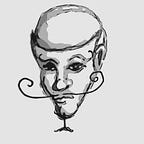REVIEW: WandaVision – “Episode 4”
SOME SPOILERS (AND EXTREMELY LOOSE VAGUE PLOT DETAILS OF TENET) AHEAD
It’s here. We’re finally gone from the idealized safety of Wanda’s physical and mental bubble and piecing it all together. Not just the real-life viewers, but the characters within WandaVision who are watching those same three episodes that we have already seen for the first time as they unfold in semi-real time. Confused? That’s the idea. It is, perhaps, the first-ever episode of television explicitly about how confusing previous episodes were.
Right away, “Episode 4” reintroduces a few familiar names and faces that remind us there are still consequences from the MCU at large. Right away, the audience receives confirmation that Geraldine, the mysterious friend from the previous episode, is actually Monica Rambeau. The audience last saw Monica as an 11-year-old girl in Captain Marvel. Now a full-grown woman, viewers quickly learn that Monica not only disappeared in the blip but that her mother died three years earlier. Her mother didn’t leave without helping her daughter. She predicted her comeback and set up protocols for when she did. After learning all of this in roughly three minutes of screen-time, however, the opening credits roll.
Two familiar faces return to the MCU this week. Kat Dennings’ Darcy always stood out among the rest of the human characters in the first two Thor films, but with little to work with, she felt wasted. Here, she delivers the same witty banter with a character whose worth the time. Randall Park always delights, and this is no exception. While Jimmy Woo was great in his Ant-Man and the Wasp role, his anxiety-tinted awkwardness and knack for overexplaining are perfect fodder for Dennings’ natural charm and charisma.
The titular characters are mostly relegated to footage that we’ve already seen as the rest of the characters play catch up. Paul Bettany and Elizabeth Olsen’s greatest hits from episodes one through three serve as a functional clip show through the eyes of an audience who never saw it. Despite being absent for most of the episode, however, Olsen’s brief scene at the end where they reveal Wanda’s real actions from the previous episode shows just how much her pitch-perfect range grounds a complicated role.
I’ve always found it fascinating when movies and television series let the audience see the same events from two perspectives. Coming off of Tenet last week, it was fun comparing the way the two accomplished it. While Tenet did so through time travel, WandaVision does through metafictional tactics that allow the real audience to remain a step ahead of the fictional one. In many ways, it gives the audience just as much control as Darcy, Jimmy, and the rest of the SWORD agents.
I admire the restraint that writers Bobak Esfarjani and Megan McDonnell had in doing a unique episode work this well. In lesser hands, a central plot consisting of characters watching events we’ve already been ourselves would have been repetitive. Their writing with Matt Shakman’s creative direction helped the rehashes of things we’ve seen feel less like a clip show and more like an extension of what we already know.
Other than that, what this episode did was confirm that these same questions we have about the show we’re watching are the ones that the characters who aren’t in Wanda’s vision are asking in the MCU. If you’re keeping track at home, that’s three degrees of viewership we’re experiencing – four if you count this review.
The episode ends with a perfectly centered ominous shot of Wanda sitting with Vision moments after he appeared to be a zombie with the scars of death all over him. Now his normal form again, he joins Wanda on the couch as the couple stares directly into the camera – taunting not only the agents watching in the show but the real-life audience, as well.
While the MCU isn’t he first place I go for social commentary, WandaVision.presents the clear and present danger of looking at the world through dated lenses that never truly existed. This can be viewed through several. While this could be a mirror to a world where many suffer from this harmful view, it also allows Wanda’s grief to personify before our eyes. By building herself this milquetoast, idealized, imaginative bubble where reality can’t hurt her, Wanda shields herself from the horrors of grieving without Vision to share it with.
What happens when the Truman Show is written and directed by Truman? That’s the question through four episodes. The show that knows that it’s a show still has to justify this metafictional world it’s unveiling. Now, as it all comes crashing down to reality, the audience within the show and the audience outside can figure out why this show exists together
A-
